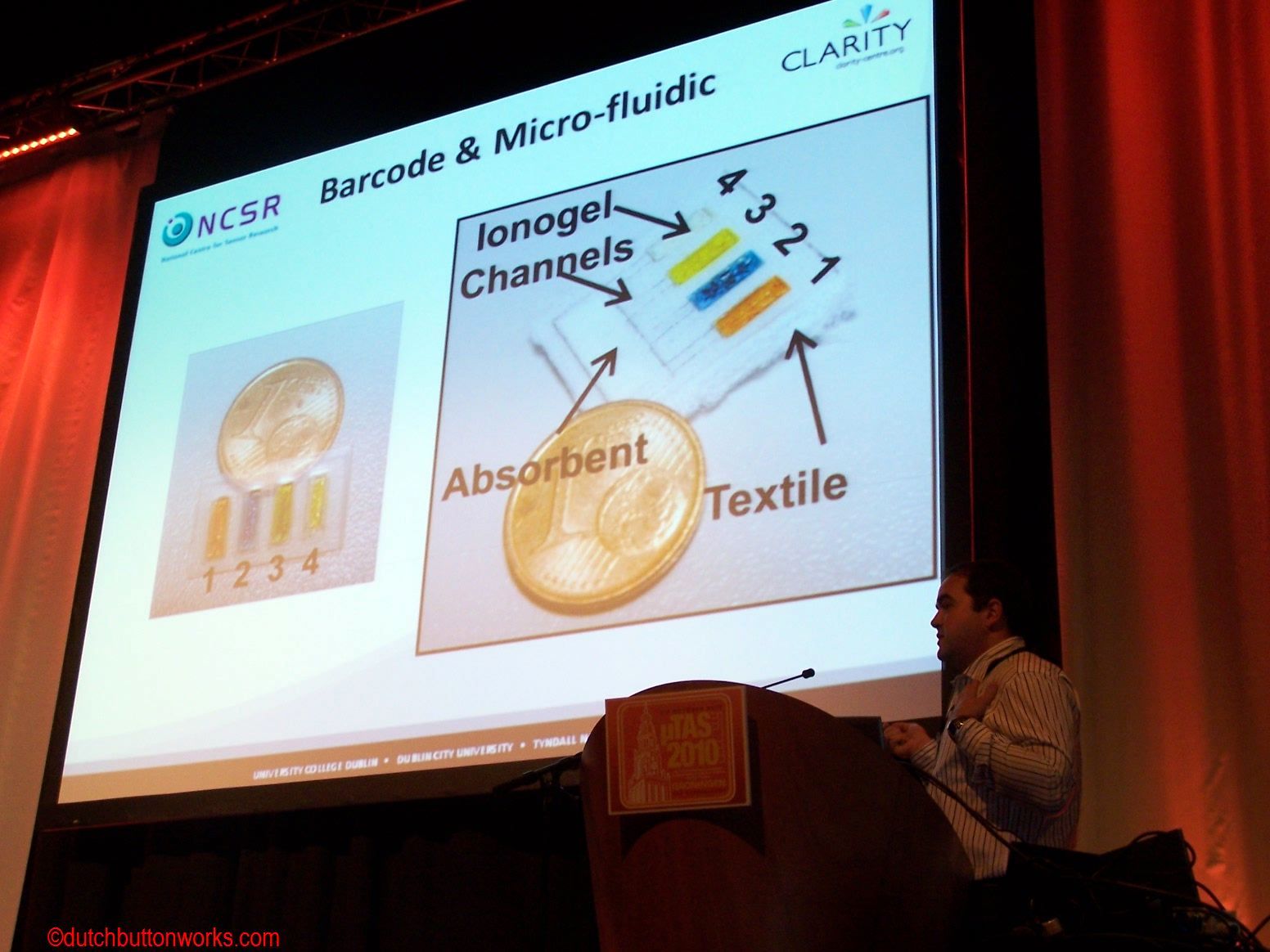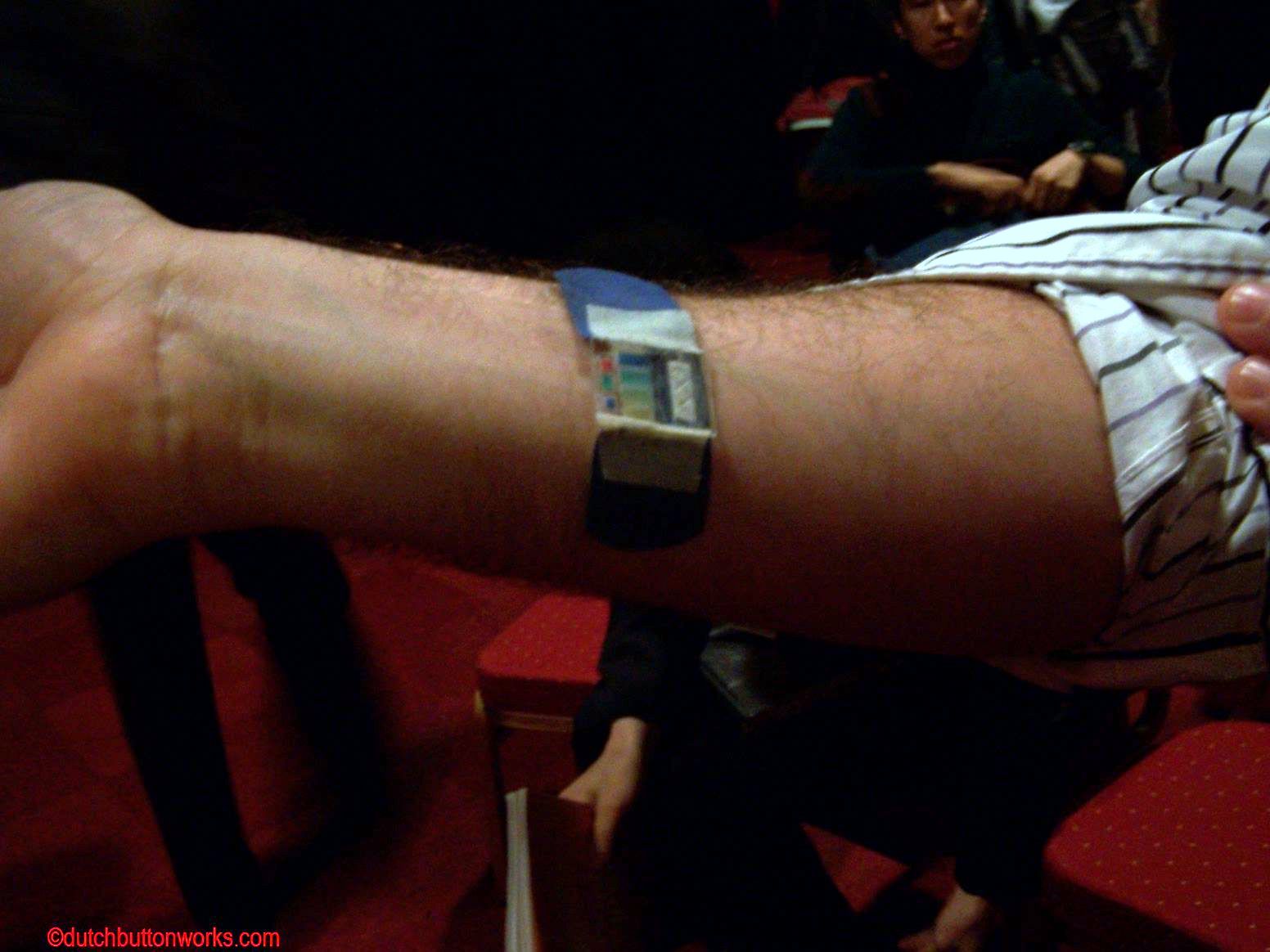Athletes’ sweat test road to glory
The 2012 Olympics
Dehydration can undermine
Fernando Benito Lopez (Clarity)
Hydration levels
Track athletes in Ireland preparing for the 2012 Olympics have been testing a device designed to improve performance by optimising their hydration levels during training. Dehydration can undermine both mental and physical performance, including causing tiredness and cramping. Analysis of sweat samples taken after training is unreliable because the key compounds oxidise when in contact with air. “It does not give a real measure of what is happening during exercise,” says Fernando Benito Lopez at the Clarity Centre for Sensor Web Technologies at Dublin City University.To tackle the problem, Benito Lopez and colleagues have developed a device that assesses hydration levels while athletes are training. It is based on an absorbent pad strapped to the athlete’s body, which draws sweat through a narrow channel containing pH sensors.
Ionogel Channels

Colour sensors
Benito Lopez is investigating the use of two different types of sensor. One uses a patch of pH-sensitive textile. The other uses an ionic dye which changes colour in the presence of sodium ions.
An LED is used to illuminate the sensor while a second light-sensitive LED detects the colour changes by measuring the intensity of light reflected off it. The resulting readings, sent wirelessly to the trackside, tell the coach the sodium content of the athlete’s sweat and therefore their hydration level. Based on this information, the coach can fine-tine the athlete’s training programme. Initial tests show the pad can continuously monitor pH changes for up to 3 hours. This could be potentially very useful, says Charlie Pedlar, a research physiologist at the Endurance Performance and Coaching Centre at St Mary’s University College in Twickenham, UK, who worked with the British Olympic team in Beijing, China, in 2008. “We measure body weight before and after training to measure water loss through sweat and breathing,” he says. But he says this does not give enough information to optimise athletes’ water intake and avoid dehydration.Benito Lopez and colleagues are investigating whether it is possible to apply the same approach to lactate, which is also present in sweat.
The arm of Benito

Source
Mixed NewScientist and own observation (congress MicroTas 2010)

